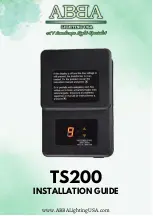
2121468.11 GB/D/F/E 02/2010
6
WIKA Operating instructions/Betriebsanleitung/Mode d'emploi/Instrucciones de servicio LS/LH-10
2121468.11 GB/D/F/E 02/2010
7
WIKA Operating instructions/Betriebsanleitung/Mode d'emploi/Instrucciones de servicio LS/LH-10
←
→
6. Packaging / 7. Starting, operation
GB
7. Starting, operation
GB
6. Packaging
Has everything been supplied?
Check the scope of supply:
Completely assembled level probe
Inspect the pressure transmitter for possible damage during transportation. Should
there be any obvious damage, inform the transport company and WIKA without delay.
Keep the packaging, as it offers optimal protection during transportation (e.g. chan-
ging installation location, shipment for repair).
Ensure that the connection contacts will not be damaged.
7. Starting, operation
Diaphragm test for your safety
It is necessary that before starting the pressure transmitter you test the diaphragm, as this is
a
safety-relevant component.
Pay attention to any liquid leaking out, for this points to a diaphragm
damage.
Use the pressure transmitter only if the diaphragm is undamaged.
Use the pressure transmitter only if it is in a faultless condition as far as the
safety-relevant features are concerned.
Signal
Power Supply
Serial No.
Product No.
PIN assignment
Coded manufacture date
P #
Mechanical connection
Product label (example)
The protection cap (A) protects the
secluded diaphragm (B) from dama-
ging the level probe during transport
and immersion. Remove the protec-
tion cap if used with viscous or
contaminated media.
An additional strain relief is not
necessary because the cable has a
max. tensile strength of 1000 N (500
N with FEP).
S #
Operate the pressure transmitter with a shielded cable and earth the shield at least on
one side of the cable, if the cable is longer than 30m (2-wire) or 3m (3- or 4-wire), or if
it is run outside of the building.
Use power supplies which guarantee reliable electrical isolation of the operating
voltage as per IEC/DIN EN 60204-1. Consider also the general requirements for PELV
circuits in accordance with IEC/DIN EN 60204-1.
Alternative for North America: The connection may also be made to „Class 2 Circuits“
or „Class 2 Power Units“ according to CEC (Canadian Electrical Code) or NEC (Nati-
onal Electrical Code).
There must be no differences in potential between medium/tank and the grounding of
the junction box and the control cabinet when the shield of the cable is applied.
Ingress protection IP 68 per IEC 60529
Please make sure that the ends of cables with flying leads do not allow any ingress of
moisture.
Electrical connection
(B)
(A)
Generally the serial number on the product label applies. If there is no serial number on the product label,
the number on the hexagon will apply.
!
Warning





































